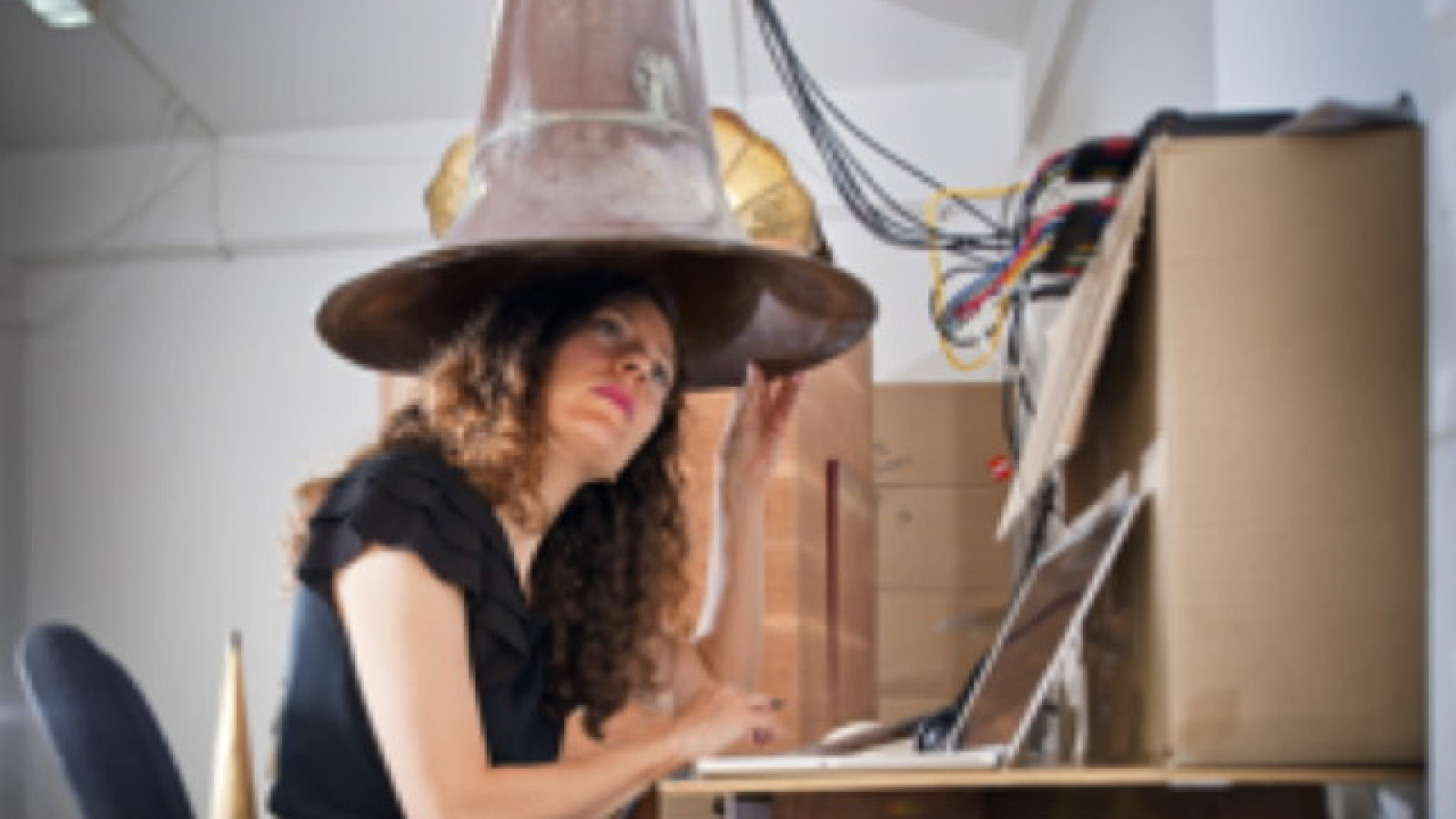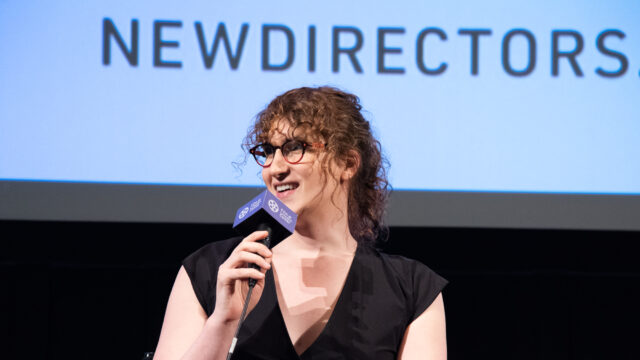Program I: Aura Satz
Free and open to the public! Seating is on a space-available basis.
Onomatopoeic Alphabet (Aura Satz, 2010)
Sound Seam (Aura Satz, 2010)
Vocal Flame (Aura Satz, 2012)
Oramics: Atlantis Anew (Aura Satz, 2011)
Doorway for Natalie Kalmus (Aura Satz, 2013)
Onomatopoeic Alphabet (Aura Satz, 2010)
A short film which looks at the possibility of a true ‘onomatopoeic’ alphabet of sound. Centred around a Chladni’s plate, a device which marks the birth of acoustics, the film explores nodal figures, sound patterns and symmetry. Each sound effectively produces a moving image and inspires the viewer to read the abstract imagery as not only a sound wave, notation or graphic score but as a true representation of what is being heard. Much like an unknown hieroglyphic code, graphic shorthand or Rorschach inkblots, the images provoke unexpected associations concerning the shape of sound and the graphic systems of language and communication. The film looks like a musical score of sorts, as well as a bizarre ever-changing alphabet that morphs like an organic living being in response to the changing audio-visuals. The film engages in a reflexive and reversible relationship between image and sound, cause and effect, the indexical trace and the symbolic code. The graphic sequences evoke utopian ideas around the possibility of a universal language, a system of signs that is decipherable by all.
Sound Seam (Aura Satz, 2010)
A film which gives voice to the idea that every surface, in particular parts of our anatomy, is potentially inscribed with an unheard sound or echoes of voices from the past. The soundtrack’s musical composition is interlaced with a voice-over which draws on Rainer Maria Rilke’s text ‘Primal Sound’, where he reflects on the possibility of playing the coronal suture of a skull with a gramophone needle. The overlapping voices of the narratives tell a forensic love story of yearning, encryption, inscription, decoding, memory and erasure. The film uses microscopic photography, scanning electron microscopy, and sounds of otoacoustic emissions to uncover haunting aural bonescapes. Music composed and recorded onto wax cylinder and acetate discs by Aleks Kolkowski. The voiceovers too are recorded using old sound technology as a filter – writing and over-writing of wax cylinder to create unexpected scratches, glitches, loops and echoes.
Vocal Flame (Aura Satz, 2012)
The movie documents a fiery sound sculpture using a Ruben's Tube, an acoustic device which visualizes sound as a standing wave of small flames. The soundtrack that animates the flickering flames features a histrionic voice-over, exploring the various embodiments of ventriloquized voices in popular culture, particularly the female voice in film. The voiceover conjures narratives of a biblical burning bush, a self-consuming flame alphabet, the moulded vocal training of My Fair Lady and the acousmatic notion of a voice without source, hidden behind a veil or curtain. Working through Radar's theme of the performing object from the perspective of the implicit ventriloquism of making an object speak, ‘Vocal Flame’ aims to expose the malleability, violence and porosity of vocal manipulation.
Oramics: Atlantis Anew (Aura Satz, 2011)
The movie is conceived of as an artist's film in homage to Daphne Oram, the pioneer of British Electronic Music and co-founder of the BBC Radiophonic workshop in 1958. The film features a close-up encounter with her unique invention, the Oramics Machine, housed at the Science Museum in London.
Oram used drawn sound principles to compose 'handwrought'electronic music, and yet the visual nature of her work remains largely unseen and unsung. The film brings this obsolete technological fantasy briefly to back to life, enabling the visualisation of the drawn sound material, re-interpreting and translating it into new filmic sequences. The soundtrack features electronic music composed by Oram, interlaced with her voiceover reading excerpts from a first draft of her book “An Individual Note of Music, Sound and Electronics” (1971)
Doorway for Natalie Kalmus (Aura Satz, 2013)
This is a film centred around the use of colour in moving image technology, exploring the disorienting technicolour prismatic effects of the lamp house of a 35mm colour film printer. Through minute shifts across an abstract colour spectrum, punctuated by a mechanical soundtrack, the film evokes kaleidoscopic perceptual after-images (bringing to mind Paul Sharits, Dario Argento and the Wizard of Oz). Natalie Kalmus was the ex-wife of technicolour inventor Herbert Kalmus, and was the colour consultant for hundreds of colour films, including The Wizard of Oz, Gone with the Wind, the Red Shoes, Black Narcissus and many more. She would draw up colour scores for each film, according to her theories of “Colour Consciousness”. She also authored a short article entitled “Doorway onto another world”, in which she described her sister’s deathbed experience of seeing deceased family members.







